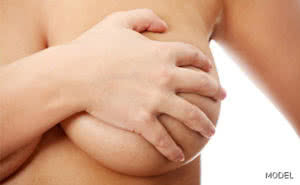Mummy Makeover – Part 1
Empty Sagging Breasts
 Having children is one of the great joys of life. They do however exact a toll on lifestyle, finances, sleep patterns, and the youthful figure of the mother. The two main areas affected by childbirth and breast feeding, are the breasts and abdomen. This article will address the breasts, and a separate article will address the abdomen.
Having children is one of the great joys of life. They do however exact a toll on lifestyle, finances, sleep patterns, and the youthful figure of the mother. The two main areas affected by childbirth and breast feeding, are the breasts and abdomen. This article will address the breasts, and a separate article will address the abdomen.
As a Plastic Surgeon of over 20 years experience, I know all my patients are individuals in their physical characteristics and in their personal desires and their goals.
Women come in all different shapes and sizes. They deposit fat in different areas and have skin with different characteristics. Genetics is a powerful force. As is gravity, childbirth and breast feeding.
The most common comment from women who have breast fed is that the baby “sucked the life out of my breasts”. For many, the weight gain of pregnancy and subsequent weight loss, enlargement of the breasts with breast feeding, and the natural loss of glandular tissue after completion of breast feeding, leave them with the feeling that their breasts have lost volume, are saggy and drooping, and in some sense have lost their youthful life and bounce. Many mothers just wish they could go back to their former glory. And others wish they could look like they did when they were breast feeding as they preferred that size and shape. Some just think it is time to have the breasts they always dreamed of.
Other causes of empty sagging breasts are the effects of gravity, the inevitable change in hormones as menopause approaches, and also the effects following a weight loss.
For any patient, the first thing to decide in the is whether they are happy with their current breast volume. Obviously if they are too big they could have a simple breast reduction, to reduce the volume and lift the breasts into a youthful position. There are Medicare item numbers for breast reduction surgery.
 If the patient is happy with the current volume of the breasts, then a breast lift (mastopexy), can be used to maintain the current volume and “dress make” the breast into a more youthful shape, and concentrate the available volume higher on the chest to restore the shape and “perkiness” of the breasts. This surgery involves scars on the breast, but the underlying muscle is not touched. This surgery can be performed as a day procedure.
If the patient is happy with the current volume of the breasts, then a breast lift (mastopexy), can be used to maintain the current volume and “dress make” the breast into a more youthful shape, and concentrate the available volume higher on the chest to restore the shape and “perkiness” of the breasts. This surgery involves scars on the breast, but the underlying muscle is not touched. This surgery can be performed as a day procedure.
There are also Medicare items numbers for breast lift surgery if specific criteria are met. The current criteria are that the youngest child is aged between 1 and 7 years, and that the nipple is below the fold under the breast (inframammary fold). Pre-approval by Medicare is required based on pre-operative photographs.
If the breasts have lost volume and are now too small and the patient desires to be bigger, then volume will need to be added in the way of a breast prosthesis. If the breasts are not too droopy, i.e. the nipple sits relatively high above the fold under the breast, then a simple breast augmentation can restore the volume and fullness of the breasts, and make them look more youthful. The size of prosthesis is a decision for the patient, and her desired breast size is a “fashion decision” to some degree. However, the prosthesis selected must have enough volume to fill the empty breast envelope for the patient.
There is a point, however, when the size of prosthesis needed to fill the specific loose breast envelope is either technically inappropriate, or unsatisfactory to the patient. Under this circumstance, the breast envelope must be reduced (by the same technique as a breast lift), which will give a youthful breast shape. This allows an appropriate sized prosthesis to be used to achieve the desired effect and appearance. This is called an “augmentation mastopexy” where the breast is both lifted and filled to the desired size.
If the breast lacks volume, and the nipples are hanging low below the inframammary fold, then the breast will have to be lifted as well as a prosthesis placed (augmentation mastopexy). If the breast is not lifted to raise the nipples, the breast tissue will tend to hang off the breast prosthesis and look unsatisfactory outside of a bra. The downside of course of lifting the breast is that scars will be required to do the “dress making”.
A key factor for any corrective surgery is timing. Ideally this surgery should be done after it is decided the family is complete. This is not a hard rule, but does mean the possible effects of further pregnancies can be avoided. Notwithstanding this, if the breasts are causing significant distress and affecting lifestyle and self-esteem, it is perfectly reasonable to correct the breasts now, and see what the future will bring. Things can always be “touched up” later after the family is completed if needed, but the patient enjoys the benefits of the surgery in the meantime.
Timing after breast feeding is also a key factor. Basically, it is ideal if the breast goes through all of its “shrinkage” changes, and the patient is back to her realistic body weight. This way there are no moving variables. Also milk production must have ceased, otherwise there is a risk of milk cysts and leakage, as well as an increased risk of infection. Roughly 6 months after ceasing breast feeding is a good guideline.
As you can see, there many issues and options to consider when correcting empty sagging breasts. Some of these are technical and are dictated by the specific characteristics of the patient. Some are personal and dictated by the preferences of the patient. There are a lot of variables to be considered.
If you are considering correcting your breasts, then there is no substitute for a consultation with an experienced Plastic Surgeon who can discuss all the unique issues that are relevant to you.





